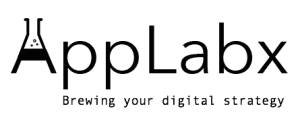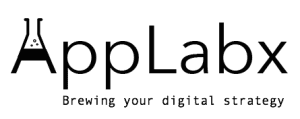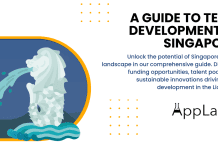Key Takeaways
- Understand the latest SEO fundamentals, including keyword research, on-page optimization, and technical SEO.
- Learn how AI, Google updates, and user experience shape modern SEO strategies in 2025.
- Access top tools, resources, and step-by-step strategies to improve search rankings and drive long-term organic growth.
In the ever-evolving digital landscape, SEO (Search Engine Optimization) remains one of the most powerful tools for businesses, content creators, and marketers alike. With the constant advancements in search engine algorithms, technologies, and user behavior, the way we approach SEO has transformed significantly over the years. As we step into 2025, SEO continues to be a cornerstone of online visibility, organic traffic, and overall digital marketing success. For those new to the world of SEO or anyone looking to refine their approach, understanding the fundamentals and staying up-to-date with the latest trends is critical to staying ahead of the curve.

Whether you’re a business owner trying to boost your website’s search rankings, a content creator looking to reach a wider audience, or a marketing professional wanting to expand your skillset, learning SEO is a must. As search engines, particularly Google, continue to refine their algorithms, understanding the intricacies of SEO becomes even more essential. From optimizing for voice search to harnessing the power of AI-driven tools, the SEO landscape in 2025 presents both challenges and opportunities for those willing to invest time in learning.
In this ultimate beginner’s guide to SEO in 2025, we’ll take you through everything you need to know to get started on your SEO journey. Whether you’re building a website, launching an e-commerce store, or managing a blog, this guide will equip you with the knowledge and practical steps to implement SEO strategies that drive results. In this guide, we’ll not only cover the core concepts of SEO, such as keyword research, on-page optimization, and technical SEO, but we’ll also dive deep into the new trends that have emerged, including AI-powered content optimization, mobile-first indexing, and the increasing role of voice search.
Why is Learning SEO Essential in 2025?
SEO is no longer just a buzzword or an optional marketing strategy—it’s a vital component of online success. As businesses strive to capture the attention of their target audience in an overcrowded digital space, the competition for search engine rankings has never been more intense. In 2025, search engines are smarter than ever before. They rely on complex algorithms to rank content based on a wide range of factors, including relevance, authority, and user experience.
Search engines like Google use artificial intelligence (AI) to understand search queries better, interpret content more accurately, and deliver more personalized results to users. This shift means that traditional SEO practices alone are no longer enough. Marketers must adapt to the latest trends and best practices to ensure their content is discoverable, relevant, and aligned with user intent. Failing to understand these nuances can result in your content being lost in the digital noise, regardless of how great your product or service is.
SEO’s Evolving Landscape
The SEO strategies that worked in the past may no longer be effective in 2025. As search engines evolve, so too must our understanding of SEO. For example, Google’s shift to mobile-first indexing, where the mobile version of a website is considered the primary version for ranking purposes, has made mobile optimization a non-negotiable part of SEO. Similarly, the rise of voice search has led to the need for more conversational keywords and content that directly answers user queries.
Moreover, Google’s focus on user experience (UX) means that factors like website speed, mobile-friendliness, and secure browsing are now integral to ranking well. Search engines want to serve their users the best possible experience, which includes fast-loading, easy-to-navigate websites that provide valuable, relevant content.
As we move further into 2025, SEO is no longer just about manipulating keywords and link-building; it’s about understanding user intent, optimizing for AI algorithms, and creating content that resonates with both search engines and users. The key to success lies in continuous learning, staying up-to-date with the latest developments, and implementing strategies that align with these new realities.
The Benefits of Learning SEO in 2025
For beginners, learning SEO can seem overwhelming. However, the benefits of mastering SEO far outweigh the initial learning curve. When done correctly, SEO not only helps you drive organic traffic but also improves your site’s usability, builds trust with your audience, and increases your chances of converting visitors into customers or clients. Here are a few key reasons why learning SEO is crucial:
- Improved Online Visibility: SEO increases the likelihood that your content will appear on the first page of search results, helping you reach a larger audience.
- Cost-Effective Marketing: Unlike paid advertising, SEO is a long-term investment that can deliver sustained results with minimal ongoing costs.
- Increased Credibility and Trust: Websites that rank higher in search results are often perceived as more credible and trustworthy by users.
- Better User Experience: Optimizing your website for SEO often leads to better site design, faster loading times, and a more intuitive user experience, all of which contribute to improved conversion rates.
- Staying Ahead of Competitors: Businesses and content creators that understand and apply SEO best practices will gain an edge over those who neglect it.
As you embark on your SEO learning journey in 2025, remember that SEO is not a one-time task but an ongoing process that requires regular attention and adaptation. It’s about creating quality content that answers your audience’s questions and optimizing your website to meet the latest technical standards. With the right approach, the knowledge you gain can help you achieve long-term online success, whether for your personal blog, a business website, or an e-commerce store.
This guide will walk you through all the essential concepts and practical steps you need to get started with SEO in 2025. From understanding the core principles to mastering advanced techniques, we’ll equip you with the tools and strategies to improve your rankings, drive more traffic, and build a strong digital presence. If you’re ready to dive into the world of SEO and unlock its full potential, then keep reading—because the ultimate beginner’s guide to SEO in 2025 starts here.
But, before we venture further, we like to share who we are and what we do.
About AppLabx
From developing a solid marketing plan to creating compelling content, optimizing for search engines, leveraging social media, and utilizing paid advertising, AppLabx offers a comprehensive suite of digital marketing services designed to drive growth and profitability for your business.
AppLabx is well known for helping companies and startups use SEO to drive web traffic to their websites and web apps.
At AppLabx, we understand that no two businesses are alike. That’s why we take a personalized approach to every project, working closely with our clients to understand their unique needs and goals, and developing customized strategies to help them achieve success.
If you need a digital consultation, then send in an inquiry here.
Learn SEO in 2025: The Ultimate Beginner’s Guide
- What is SEO and Why It Matters in 2025?
- Getting Started with SEO: The Basics Every Beginner Should Know
- Core SEO Techniques Every Beginner Must Learn
- Advanced SEO Concepts to Explore in 2025
- Building an SEO Strategy for 2025: A Step-by-Step Guide
- Common SEO Mistakes to Avoid in 2025
- Resources for Further Learning
1. What is SEO and Why It Matters in 2025?
Search Engine Optimization (SEO) is the practice of optimizing websites and online content to rank higher on search engine results pages (SERPs) in response to user queries. SEO helps search engines understand the content and relevance of your website so that it can be delivered to the right users at the right time. SEO is essential in 2025 because search engines are more sophisticated than ever, utilizing artificial intelligence (AI) and machine learning algorithms to deliver the most accurate, relevant, and user-centric search results.
Understanding SEO in 2025
SEO is an evolving discipline that continues to shift as search engine algorithms become more advanced. In 2025, SEO isn’t just about manipulating keywords or building backlinks—it’s about creating content that satisfies the user’s intent while ensuring technical optimization and a great user experience.
SEO in 2025 focuses on the following key components:
- On-Page SEO: Optimizing the elements on your website, such as content, keywords, meta tags, and images.
- Off-Page SEO: Building external signals such as backlinks from authoritative websites to boost your site’s credibility.
- Technical SEO: Optimizing the backend of your website, such as site speed, mobile optimization, and crawlability.
How SEO Has Evolved Over the Years
SEO has undergone significant changes since its inception in the late 1990s. In its early days, SEO was primarily about keyword density and link quantity. As search engines evolved, so did SEO strategies. Here’s a quick look at how SEO has changed:
- Early SEO (1990s – Early 2000s): Keyword stuffing, meta tags, and basic link-building were common tactics. Websites could rank by overusing exact-match keywords.
- Google’s Algorithm Updates (2000s – 2010s): Google introduced several algorithm updates, including Panda, Penguin, and Hummingbird, to improve the quality of search results by penalizing keyword stuffing and low-quality backlinks.
- Mobile-First and User Experience (2015 – 2020s): Google introduced mobile-first indexing, meaning the mobile version of a site would be prioritized for rankings. Core Web Vitals and page experience metrics became important ranking factors.
- AI and Machine Learning (2025 and Beyond): Search engines are now heavily reliant on AI algorithms, which focus on user intent, content quality, and personalized experiences. SEO strategies must align with AI-driven rankings and semantic search.
Why SEO Matters in 2025
SEO matters more than ever in 2025 because it helps businesses and content creators capture relevant traffic and convert that traffic into tangible results. Below are key reasons why SEO is crucial for online success in 2025:
- Increased Online Competition: As more businesses shift to digital platforms, SEO ensures that you stand out in crowded markets.
- Search Engines are Smarter: Google’s AI-based algorithms are now able to assess content quality more thoroughly, meaning you must create highly relevant, authoritative, and user-friendly content.
- Voice and Visual Search: The rise of voice search and visual search has changed how users interact with search engines, requiring a new approach to keyword optimization and content structure.
- Cost-Effective Marketing: Unlike paid advertising, SEO offers long-term benefits and consistent traffic without the ongoing cost, making it a cost-effective marketing strategy.
- Improved User Experience: Search engines prioritize user experience as a ranking factor, which means that websites with fast load times, mobile responsiveness, and a seamless interface are more likely to rank higher.
Search Engine Algorithms and User Intent
Understanding how search engines work is crucial for crafting a successful SEO strategy. Search engines rely on complex algorithms that evaluate thousands of factors to determine the relevance and quality of a webpage. In 2025, the core focus of these algorithms has shifted towards understanding user intent and providing results that answer the query with the best possible content.
- User Intent: Search engines now prioritize understanding the “intent” behind a search query. There are three types of user intent:
- Informational Intent: The user is looking for information (e.g., “How to start a blog”).
- Navigational Intent: The user is trying to get to a specific website (e.g., “Facebook login”).
- Transactional Intent: The user is ready to make a purchase or take a specific action (e.g., “buy wireless earbuds”).
- Semantic Search: Search engines use semantic search techniques, which focus on understanding the meaning behind words and phrases rather than just the exact keywords. This is especially important in long-tail keyword searches and conversational queries.
SEO and the User Experience (UX)
In 2025, the user experience is a central component of SEO. Google’s Core Web Vitals, which measure a website’s speed, responsiveness, and visual stability, are key ranking factors. Websites that prioritize user experience are more likely to rank higher because search engines aim to provide the best possible experience for their users.
Key aspects of UX in SEO:
- Page Load Speed: Fast-loading pages are critical for retaining users. Websites with slow load times lead to higher bounce rates and lower rankings.
- Mobile Optimization: With mobile-first indexing, ensuring that your website is mobile-friendly is crucial for ranking well in search engines.
- Secure Browsing: HTTPS has become a ranking signal. Search engines prefer websites with secure, encrypted connections to protect users’ data.
- Easy Navigation: A website with clear navigation and intuitive structure improves user experience, which in turn benefits SEO rankings.
Examples of SEO Impacting Business Success in 2025
Several companies have leveraged SEO effectively to increase their online visibility and business success. Below are examples of how SEO has transformed businesses in 2025:
- E-commerce Stores: In the competitive world of e-commerce, SEO is vital for ranking higher in search results. For example, an e-commerce store selling eco-friendly products can optimize its website for long-tail keywords like “sustainable home goods” or “biodegradable cleaning products” to attract eco-conscious consumers.
- Local Businesses: Local SEO allows businesses to appear in local search results when users search for services nearby. A coffee shop in New York City can optimize for phrases like “best coffee in NYC” and “organic coffee near me” to capture local traffic.
- Content Creators and Bloggers: For bloggers and content creators, SEO helps attract organic traffic to their websites and increases engagement. By targeting niche keywords, optimizing content for featured snippets, and acquiring backlinks from authoritative sites, bloggers can build their audience and gain recognition.
| SEO Strategy | Example | Result |
|---|---|---|
| Keyword Optimization | A local restaurant targeting “best pizza in [city]” | Improved local search rankings, increased foot traffic |
| Content Marketing | A blog about digital marketing using “SEO tips for 2025” | Increased organic traffic, higher user engagement |
| Mobile Optimization | A retail store with a mobile-friendly site for shopping | Higher conversions from mobile users, improved mobile rankings |
SEO in the Age of AI and Automation
The integration of artificial intelligence and machine learning in search engine algorithms has changed how SEO works. Google’s AI system, RankBrain, for instance, helps the search engine understand the context of searches and deliver more relevant results. In 2025, AI is used to:
- Analyze Search Trends: AI tools can predict trends and identify shifts in search behavior, allowing businesses to adapt their SEO strategies.
- Content Creation: AI-powered content tools can assist in generating high-quality, SEO-friendly content based on keyword analysis and user intent.
- Automating Optimization: AI-driven tools can automatically optimize on-page elements, such as meta tags and image alt texts, improving SEO without requiring manual effort.
The Future of SEO in 2025 and Beyond
As we move forward, SEO will continue to evolve in response to changing search engine algorithms and user behavior. In 2025, it’s clear that SEO is no longer just about ranking for keywords—it’s about delivering a holistic experience that satisfies both search engines and users. Whether it’s optimizing for voice search, embracing AI tools, or creating content that resonates with users’ intent, SEO will remain a vital tool for businesses looking to thrive in an increasingly competitive digital landscape.
By mastering SEO in 2025, you can ensure your website’s visibility, improve user engagement, and drive sustainable growth in the digital world.
2. Getting Started with SEO: The Basics Every Beginner Should Know
SEO is an essential digital marketing strategy, but for beginners, it can often seem overwhelming. Understanding the fundamentals of SEO is the first step toward creating a website or content that ranks well on search engine results pages (SERPs). In this section, we will walk you through the basic SEO concepts every beginner should know and help you lay a solid foundation to begin your SEO journey.
What is SEO?
At its core, SEO refers to the practices and strategies used to optimize a website or piece of content so that it ranks higher in search engine results. When you search for something on Google or another search engine, the search engine uses a set of algorithms to determine which pages are most relevant to your query. SEO helps search engines understand and rank your content by optimizing various aspects of your website.
The three main types of SEO include:
- On-Page SEO: Optimizing individual web pages to improve their rankings and relevance for targeted keywords.
- Off-Page SEO: Activities that take place outside of your website to improve its search engine rankings, like backlink building.
- Technical SEO: Optimizing the technical aspects of a website to ensure that search engines can crawl, index, and rank it effectively.
Understanding Keywords and Search Intent
One of the first concepts every SEO beginner must understand is keywords. Keywords are the terms or phrases users type into search engines when looking for information, products, or services. Optimizing your website for relevant keywords is crucial for appearing in search results.
- Keyword Research: The process of finding and analyzing the keywords that users are searching for in relation to your business, product, or service.
- Use tools like Google Keyword Planner, SEMrush, or Ahrefs to find high-traffic, low-competition keywords.
- Focus on both short-tail (general) and long-tail (specific) keywords. Long-tail keywords tend to have lower competition and higher conversion potential.
- Example: For a business selling eco-friendly products, keywords like “sustainable home goods” or “biodegradable cleaning supplies” are more targeted and can attract a more relevant audience.
- Search Intent: Understanding the intent behind a user’s search is critical to SEO success.
- Informational Intent: The user is looking for information (e.g., “How to recycle plastic”).
- Navigational Intent: The user is looking for a specific website (e.g., “Facebook login”).
- Transactional Intent: The user is ready to make a purchase (e.g., “buy organic cotton t-shirts”).
Knowing the intent behind a keyword helps in crafting content that aligns with what users are searching for, which is key to ranking higher in search results.
How Search Engines Work
Before diving into the optimization tactics, it’s important to understand how search engines work. Search engines like Google use automated bots, also known as crawlers or spiders, to discover and index pages across the internet.
- Crawling: Crawlers visit websites and scan their content to understand what the pages are about. They follow links from one page to another, gathering information about your site.
- Indexing: Once crawlers gather data, the information is stored in a massive index. This index is used to match search queries with relevant content.
- Ranking: Search engines rank indexed pages based on hundreds of factors, such as relevance, content quality, backlinks, user experience, and more.
To improve your website’s chances of appearing in search results, you need to ensure that it’s easily crawlable and that your content aligns with search engines’ ranking criteria.
On-Page SEO: Optimizing Your Content
On-page SEO refers to the elements on your website that you can control to improve rankings. Proper optimization of on-page elements helps search engines better understand your content, making it more likely to rank higher in search results.
Key on-page SEO elements include:
- Title Tags: The title tag is one of the most important on-page elements. It tells search engines and users what the page is about.
- Include your primary keyword near the beginning of the title.
- Keep it under 60 characters to ensure it displays correctly in search results.
- Example: “Best Organic Cleaning Products for a Greener Home | Eco-Friendly Store”
- Meta Descriptions: Meta descriptions provide a summary of the page’s content. Although meta descriptions don’t directly impact rankings, they influence click-through rates (CTR).
- Write compelling descriptions that entice users to click.
- Keep it under 160 characters for optimal display.
- Example: “Discover eco-friendly cleaning products for a healthier home. Shop organic, biodegradable options today!”
- Header Tags (H1, H2, H3, etc.): Use header tags to structure your content and make it more readable for both users and search engines.
- The H1 tag should contain your primary keyword and represent the main topic of the page.
- Use H2 and H3 tags for subheadings to break the content into logical sections.
- Content Optimization: Your content should be informative, valuable, and relevant to the search query.
- Include your target keywords naturally in the content.
- Aim for high-quality content that answers the user’s query in-depth.
- Example: If your page targets the keyword “best organic cleaning products,” ensure that the content is a comprehensive guide to the top products available in the market.
- Image Optimization: Images should be optimized for faster loading times and search relevance.
- Use descriptive file names and alt text for images.
- Example: Image file name: “eco-friendly-cleaning-products.jpg”; Alt text: “Eco-friendly biodegradable cleaning products.”
Technical SEO: Ensuring Your Website is Crawlable and Indexed
Technical SEO focuses on improving the backend of your website to ensure that search engines can crawl and index your site effectively. This includes making sure your website is accessible, fast, secure, and optimized for mobile devices.
Important technical SEO aspects include:
- Website Speed: Search engines, particularly Google, prioritize fast-loading websites in their rankings.
- Use tools like Google PageSpeed Insights to analyze and improve your site’s loading speed.
- Compress images, leverage browser caching, and minify JavaScript to improve load times.
- Mobile Optimization: With mobile-first indexing, Google uses the mobile version of your site for ranking. Your website must be mobile-friendly.
- Use responsive design to ensure your site adapts to different screen sizes.
- Test mobile-friendliness using Google’s Mobile-Friendly Test tool.
- Secure Website (HTTPS): Websites that use HTTPS (instead of HTTP) are considered more secure and are favored by search engines.
- Ensure your site uses an SSL certificate to encrypt data and display a padlock in the browser’s address bar.
- XML Sitemap: An XML sitemap helps search engines crawl and index your site more efficiently.
- Submit your sitemap to Google Search Console to ensure all important pages are indexed.
Off-Page SEO: Building Authority and Credibility
Off-page SEO refers to actions taken outside of your website to improve your rankings. The most important off-page SEO activity is link building, which involves getting other authoritative websites to link back to your content.
- Backlinks: A backlink is a link from another website to your own. Search engines view backlinks as “votes of confidence” from other sites, which can significantly boost your rankings.
- Focus on earning high-quality backlinks from authoritative websites.
- Example: If your eco-friendly cleaning blog gets a backlink from a popular environmental magazine, it can improve your credibility and search rankings.
- Social Signals: While social media signals don’t directly affect SEO, sharing content on social platforms can drive traffic and increase the chances of earning backlinks.
Measuring SEO Success: Tracking Your Performance
Once you’ve implemented SEO strategies, it’s essential to track your performance to ensure that your efforts are paying off. Regular monitoring helps you identify areas that need improvement and make data-driven decisions.
Key metrics to track:
- Organic Traffic: The amount of traffic coming from search engines. Use Google Analytics to measure this.
- Keyword Rankings: Monitor where your website ranks for your target keywords using tools like SEMrush, Ahrefs, or Google Search Console.
- Bounce Rate: The percentage of visitors who leave your website after viewing just one page. A high bounce rate can indicate poor user experience or irrelevant content.
- Conversion Rate: The percentage of visitors who take a desired action (e.g., purchasing a product or signing up for a newsletter). High conversion rates often signal that your content is engaging and relevant.
| Metric | Tool | What to Track |
|---|---|---|
| Organic Traffic | Google Analytics | Total visits from organic search results |
| Keyword Rankings | Google Search Console | Rankings for specific target keywords |
| Bounce Rate | Google Analytics | Percentage of users who leave after one page |
| Conversion Rate | Google Analytics, E-commerce tools | Percentage of users who complete a desired action |
Conclusion
Getting started with SEO requires a combination of understanding the basics, applying strategies, and continuously measuring and optimizing your efforts. By mastering these fundamental elements—keyword research, on-page SEO, technical SEO, and off-page SEO—you will be well on your way to building a website that ranks well in search engines and attracts valuable traffic.
Remember, SEO is a long-term investment, and success doesn’t happen overnight. However, by staying consistent, following best practices, and keeping up with the latest trends, you can achieve significant improvements in your website’s performance over time.
3. Core SEO Techniques Every Beginner Must Learn
SEO is a multifaceted discipline that requires a combination of strategies to successfully optimize your website for search engines. For beginners, it is important to focus on core SEO techniques that lay a solid foundation for ongoing optimization efforts. These techniques encompass everything from keyword research and content optimization to technical SEO and link-building. In this section, we will explore these core techniques in detail to give you a comprehensive understanding of the most essential aspects of SEO.
Keyword Research: The Foundation of SEO
Keyword research is the first and most critical step in any SEO campaign. Without understanding what users are searching for, it’s impossible to create content that satisfies their needs.
- What is Keyword Research?
- Keyword research involves finding the words and phrases that potential customers or users are searching for on search engines.
- The goal is to identify keywords with high search volume and low competition that you can realistically rank for.
- How to Conduct Keyword Research
- Use keyword research tools such as Google Keyword Planner, Ahrefs, SEMrush, or Moz to discover relevant keywords.
- Focus on long-tail keywords (longer, more specific phrases) because they typically have lower competition and higher conversion rates.
- Understand search intent: Are users searching to buy, learn, or navigate?
- Example: A search for “best organic cleaning products” shows informational intent, while “buy organic cleaning products” indicates transactional intent.
- Keyword Research Tips
- Group Keywords: Group similar keywords into clusters to optimize multiple pages for related terms.
- Example: For an eco-friendly store, groups could be “eco-friendly products,” “sustainable living products,” and “biodegradable cleaning supplies.”
- Consider Search Volume and Competition: Prioritize keywords that have a high search volume but relatively low competition to ensure your pages have the best chance to rank.
- Group Keywords: Group similar keywords into clusters to optimize multiple pages for related terms.
On-Page SEO: Optimizing Your Web Pages
On-page SEO refers to optimizing elements within your website that directly influence its rankings. This includes optimizing content, HTML tags, and multimedia to ensure they align with the keywords you’re targeting.
- Title Tags and Meta Descriptions
- Title Tag: This is one of the most important on-page SEO elements. It should accurately describe the page’s content and include the target keyword.
- Tip: Keep it under 60 characters to ensure it displays properly in search results.
- Example: “Best Eco-Friendly Cleaning Products for a Greener Home”
- Meta Description: This is the short snippet that appears below the title in search results. While it doesn’t directly affect rankings, it plays a significant role in CTR (Click-Through Rate).
- Tip: Make it compelling and under 160 characters to encourage users to click.
- Example: “Discover the top organic cleaning products that help reduce your carbon footprint and keep your home spotless.”
- Title Tag: This is one of the most important on-page SEO elements. It should accurately describe the page’s content and include the target keyword.
- Header Tags (H1, H2, H3, etc.)
- Use header tags to structure your content and improve readability.
- H1: Use the H1 tag for the main heading of your page. This should contain your primary keyword.
- H2, H3: Use H2 and H3 tags for subheadings, making it easier for both users and search engines to navigate your content.
- Content Optimization
- Content should be high-quality, informative, and relevant to the search query.
- Include your target keywords naturally throughout the content. Avoid keyword stuffing.
- Tip: Aim for a minimum of 1,000 words for comprehensive content, but longer content (2,000+ words) often performs better.
- Example: A detailed blog post about “eco-friendly home cleaning products” should cover topics like types of eco-friendly cleaners, benefits, and top-rated products.
- Internal Linking
- Use internal links to guide users to related content within your site and to help search engines crawl and index your pages.
- Example: In a blog post about “sustainable living,” link to other articles on your site, such as “10 Ways to Reduce Your Carbon Footprint.”
- Image Optimization
- Ensure images are compressed for fast loading speeds and are tagged with descriptive file names and alt text that include relevant keywords.
- Example: Image file name: “eco-friendly-cleaning-products.jpg”; Alt text: “Best eco-friendly cleaning products for a sustainable home.”
Technical SEO: Enhancing Your Website’s Performance
Technical SEO focuses on optimizing the technical aspects of your website to ensure search engines can crawl, index, and rank it efficiently. While on-page and off-page SEO are crucial, technical SEO is foundational for making sure your website is optimized for search engine algorithms.
- Website Speed
- Page load speed is a significant ranking factor. Slow websites can lead to a poor user experience and high bounce rates.
- Tip: Use tools like Google PageSpeed Insights to analyze and optimize your website’s speed.
- Actions: Compress images, minify CSS, JavaScript, and HTML, and use a Content Delivery Network (CDN) to speed up loading times.
- Mobile-Friendliness
- With mobile-first indexing, Google prioritizes the mobile version of your site when ranking pages.
- Tip: Use responsive web design to ensure your site works well across all devices.
- Test: Use Google’s Mobile-Friendly Test to check if your website passes mobile usability tests.
- SSL and HTTPS
- Websites with HTTPS (secure sites) are considered more trustworthy by search engines.
- Tip: Ensure your site has an SSL certificate to make your site secure and display the padlock symbol in browsers.
- XML Sitemap
- An XML sitemap helps search engines easily find and index all of your site’s pages.
- Tip: Submit your XML sitemap to Google Search Console to ensure proper crawling.
- Crawlability and Robots.txt
- Your website must be crawlable by search engine bots. Ensure that you don’t block important pages in your robots.txt file.
- Tip: Use the Google Search Console Crawl Errors report to check for crawl issues.
Off-Page SEO: Building Authority Through External Signals
Off-page SEO refers to actions taken outside of your website to improve its rankings. This is primarily achieved through link building, which helps build domain authority and trust with search engines.
- Backlinks
- Backlinks (links from other websites to yours) are one of the most important ranking factors.
- Quality over Quantity: Focus on acquiring high-quality backlinks from authoritative websites in your industry.
- How to Earn Backlinks:
- Create valuable, shareable content that naturally attracts links.
- Reach out to bloggers or influencers for collaborations or guest post opportunities.
- Use HARO (Help a Reporter Out) to earn backlinks by providing expert quotes to journalists.
- Social Media Signals
- While social media signals don’t directly affect rankings, they can drive traffic to your website and increase the likelihood of earning backlinks.
- Tip: Share your content on popular social media platforms like Facebook, Twitter, and LinkedIn to increase visibility.
Local SEO: Optimizing for Local Searches
For businesses targeting local customers, local SEO is crucial. This ensures that your business appears in local search results when users search for services near them.
- Google My Business (GMB)
- Create and optimize your Google My Business profile. This allows your business to appear in Google Maps and local search results.
- Tip: Fill out your GMB profile completely with accurate business hours, contact information, and high-quality images.
- Local Citations
- Local citations are mentions of your business on other websites, especially directories.
- Tip: Ensure that your business name, address, and phone number (NAP) are consistent across all local listings.
- Reviews and Ratings
- Encourage customers to leave positive reviews on platforms like Google, Yelp, and Trustpilot.
- Tip: Respond to reviews to engage with customers and show that you value their feedback.
Monitoring and Analytics: Tracking SEO Performance
SEO is not a one-time task; it’s an ongoing process. To ensure that your efforts are paying off, you need to monitor your SEO performance regularly.
- Google Analytics
- Use Google Analytics to track organic traffic, user behavior, and conversions. This data helps you make informed decisions about your SEO strategy.
- Google Search Console
- Google Search Console provides valuable data on search performance, including impressions, clicks, and average position for your target keywords.
- Tip: Regularly check for crawl errors and issues in Google Search Console to fix any problems promptly.
| SEO Tool | What It Tracks | Use Case |
|---|---|---|
| Google Analytics | Traffic, bounce rate, conversions | Understand user behavior and measure success |
| Google Search Console | Keyword rankings, crawl errors, impressions | Monitor your site’s visibility in search results |
| SEMrush / Ahrefs | Backlink profile, keyword rankings, competitor analysis | Track backlinks and assess competitive positioning |
Conclusion
Mastering the core SEO techniques is crucial for beginners who want to succeed in driving organic traffic and improving search engine rankings. From conducting keyword research to optimizing your website’s technical structure, these foundational techniques are essential for building a strong SEO strategy.
While SEO is an ongoing effort, by applying these core techniques, beginners can start to see measurable improvements in their website’s performance. As you progress, you can refine your strategies and dive deeper into advanced SEO techniques, but mastering the basics is the first step toward achieving long-term SEO success.
4. Advanced SEO Concepts to Explore in 2025
As SEO evolves, beginners eventually reach a stage where they need to explore advanced SEO concepts to stay ahead of the competition. In 2025, these advanced techniques are crucial for those who want to take their SEO strategies to the next level. From machine learning and AI-powered search engines to understanding the importance of user experience, these advanced tactics will help you refine your SEO efforts and gain better rankings.
This section will delve into some of the most advanced SEO concepts you should explore in 2025.
1. Artificial Intelligence and Machine Learning in SEO
Artificial intelligence (AI) and machine learning (ML) have transformed how search engines process and rank content. These technologies enable search engines like Google to analyze search queries, understand context, and deliver more relevant results.
- How AI and ML Influence SEO
- Google’s RankBrain, BERT, and MUM (Multitask Unified Model) updates use AI and ML to better understand the context and intent behind search queries.
- Search engines now use semantic search to interpret not only the keywords but the meaning behind them, allowing for more accurate rankings.
- Optimizing for AI and ML Algorithms
- Natural Language Processing (NLP): AI-powered algorithms like BERT focus on understanding the natural language used in search queries. This means content that mimics how humans talk and answer questions tends to rank better.
- Example: Instead of using stiff, keyword-heavy language, create content that is conversational and answers questions naturally.
- Featured Snippets and Position Zero: With the rise of featured snippets, Google’s AI understands what information is likely to answer the user’s query in a succinct and concise manner.
- Tip: Format your content to answer common questions directly and clearly to increase your chances of appearing in position zero.
- Natural Language Processing (NLP): AI-powered algorithms like BERT focus on understanding the natural language used in search queries. This means content that mimics how humans talk and answer questions tends to rank better.
- Example: If you have a blog about gardening, answer specific questions like “How do I grow tomatoes indoors?” clearly in a structured format to increase the chances of being featured in the snippet.
2. Search Intent Optimization
Search intent, or user intent, is a critical concept that has grown increasingly important in 2025 SEO. Search engines now prioritize delivering results that best match the user’s intent behind the search query.
- Types of Search Intent
- Informational Intent: The user is looking for information.
- Example: “How to plant a tree.”
- Navigational Intent: The user is looking for a specific website.
- Example: “Facebook login.”
- Transactional Intent: The user is looking to purchase something.
- Example: “Buy eco-friendly shampoo online.”
- Informational Intent: The user is looking for information.
- How to Optimize for Search Intent
- Analyze the intent behind your target keywords and create content that meets those needs.
- Ensure that your landing pages and content match the search intent, whether the user is looking for information, solutions, or ready to buy.
- Example: If you’re ranking for the keyword “buy sustainable cleaning products,” make sure your landing page provides clear product listings, prices, and easy ways to purchase.
- Intent Mapping: Align your content strategy with the various stages of the buyer’s journey:
- Top-of-the-Funnel (TOFU): Informational content that provides value and builds awareness.
- Middle-of-the-Funnel (MOFU): Content that nurtures leads, such as product comparisons or case studies.
- Bottom-of-the-Funnel (BOFU): Transactional content designed to convert, like product pages or pricing pages.
3. E-A-T: Expertise, Authoritativeness, and Trustworthiness
In 2025, Google continues to prioritize E-A-T (Expertise, Authoritativeness, and Trustworthiness) as a key ranking factor, especially for YMYL (Your Money Your Life) topics like finance, health, and legal services.
- What is E-A-T?
- Expertise: Content created by experts or knowledgeable sources within a specific field.
- Authoritativeness: The reputation and authority of the website or author on the subject matter.
- Trustworthiness: The reliability and credibility of the website, particularly for sensitive topics.
- How to Build E-A-T
- Author Bios and Credentials: Ensure that content creators have relevant credentials or expertise.
- Cite Authoritative Sources: Link to credible, well-regarded sources to back up claims.
- User Reviews and Testimonials: Use positive reviews and social proof to build trust.
- Example: For a health-related website, having articles written by certified medical professionals and citing reputable sources such as medical journals or government health websites can improve E-A-T.
- Tip: Focus on creating high-quality, well-researched content and earn authoritative backlinks from other trustworthy websites.
4. Core Web Vitals and User Experience Signals
Google introduced Core Web Vitals as a ranking factor in 2021, and in 2025, they remain crucial for SEO success. These signals focus on user experience, particularly page load speed, interactivity, and visual stability.
- Core Web Vitals Metrics
- Largest Contentful Paint (LCP): Measures loading performance. Aim for LCP of 2.5 seconds or faster.
- First Input Delay (FID): Measures interactivity. Aim for FID of less than 100 milliseconds.
- Cumulative Layout Shift (CLS): Measures visual stability. Aim for a CLS score of less than 0.1.
- How to Improve Core Web Vitals
- Improve Page Load Speed: Compress images, enable browser caching, and use a Content Delivery Network (CDN).
- Reduce JavaScript Execution Time: Optimize and minify JavaScript to improve page interactivity.
- Optimize Visual Elements: Use size attributes for images and videos to prevent layout shifts during page loading.
- Example: A slow-loading ecommerce site with large image files may frustrate users and result in higher bounce rates, which negatively impacts rankings. Ensuring that your images are compressed and your site loads quickly will help retain users and improve rankings.
5. Structured Data and Schema Markup
In 2025, structured data and schema markup remain essential for enhancing search visibility and driving higher click-through rates (CTR). By marking up your content with structured data, search engines can better understand your content and present it in a more engaging way.
- What is Schema Markup?
- Schema markup is a type of structured data that helps search engines understand the context of your content.
- It involves adding tags or code to your website’s HTML that give additional information about your content, such as ratings, prices, or reviews.
- Types of Schema Markup
- Product Schema: Helps display product information directly in search results (price, availability, and reviews).
- Article Schema: Used to enhance the visibility of articles, blog posts, and news content.
- FAQ Schema: Enables the display of questions and answers directly in search results.
- How to Implement Schema Markup
- Use tools like Google’s Structured Data Markup Helper to generate the necessary code.
- Test your structured data with the Google Structured Data Testing Tool to ensure it’s correctly implemented.
- Example: If you have an e-commerce website, adding product schema can allow your product listings to appear with star ratings and price information directly in search results, making your listings more appealing to users.
| Schema Type | Description | Use Case |
|---|---|---|
| Product Schema | Provides information about products (e.g., price, availability) | Ecommerce websites displaying product information |
| Article Schema | Improves visibility for articles and blog posts | Blogs or news websites with written content |
| FAQ Schema | Displays frequently asked questions directly in SERPs | Websites with FAQ pages |
6. Voice Search Optimization
With the rise of voice assistants like Siri, Alexa, and Google Assistant, voice search has become a major SEO factor in 2025. Voice search queries are typically longer, conversational, and question-based, which means optimizing your content for these queries is essential.
- Why Voice Search Matters
- According to recent studies, over 50% of searches are now voice-based, especially on mobile devices.
- Voice searches are often local in nature, such as “Where is the nearest coffee shop?”
- Optimizing for Voice Search
- Use Natural Language: Create content that mimics the way people speak, with conversational phrases and question formats.
- Optimize for Featured Snippets: Many voice search results pull from featured snippets, so structuring your content to answer specific questions directly can help.
- Local SEO: Since many voice searches are location-based, ensure that your business is optimized for local searches, especially with Google My Business.
- Example: If you have a restaurant, optimize your Google My Business profile and create content that answers common voice search questions like “What time does XYZ Restaurant close?”
7. Video SEO: Optimizing for YouTube and Other Video Platforms
Video continues to be one of the most engaging forms of content on the web, and optimizing videos for search engines has become essential. YouTube, the second-largest search engine after Google, is a major platform for video SEO.
- How to Optimize Videos for SEO
- Video Titles and Descriptions: Include relevant keywords in your video title and description.
- Tags: Use relevant tags to help your video appear in search results.
- Captions and Transcripts: Adding captions or transcripts to your videos allows search engines to crawl and understand the content of your videos better.
- Example: For a tutorial video on creating eco-friendly DIY cleaning products, ensure the video title is optimized, such as “How to Make Eco-Friendly Cleaning Products at Home | DIY Tutorial.”
Conclusion
As SEO evolves in 2025, these advanced concepts provide a comprehensive roadmap for staying competitive in the digital space. By understanding and implementing AI-driven strategies, optimizing for search intent, enhancing user experience with Core Web Vitals, and leveraging structured data, you can build a robust SEO strategy that aligns with the latest industry trends.
Mastering these advanced SEO techniques will give you the edge necessary to outrank your competitors and drive sustained organic traffic to your website. The SEO landscape continues to evolve, and by staying informed and adaptable, you can ensure that your strategies remain effective for years to come.
5. Building an SEO Strategy for 2025: A Step-by-Step Guide
Creating an SEO strategy for 2025 requires a well-thought-out, data-driven approach. As SEO continues to evolve with new technologies, user behavior changes, and Google’s algorithm updates, it’s crucial to build a strategy that is both adaptable and future-proof. A comprehensive SEO strategy not only helps your website rank higher in search engine results pages (SERPs) but also drives targeted traffic, improves user engagement, and increases conversions.
In this section, we’ll walk through a detailed, step-by-step guide to building an SEO strategy for 2025, focusing on the latest trends and techniques that are crucial for success.
Step 1: Set Clear SEO Goals
Before diving into the technical aspects of SEO, it’s important to set clear, measurable goals. This ensures that your SEO efforts are aligned with your business objectives, and it allows you to track progress and make necessary adjustments along the way.
- Define Your Business Objectives
- Understand what you want to achieve with your SEO efforts (e.g., increased website traffic, higher conversions, better brand awareness).
- Align your SEO goals with your overall marketing and business goals to ensure consistency.
- Set SMART SEO Goals
- Specific: Define exactly what you want to achieve (e.g., increase organic traffic by 30%).
- Measurable: Ensure your goal can be tracked (e.g., increase organic sessions by 5,000 monthly).
- Achievable: Set a goal that is realistic given your resources.
- Relevant: Ensure the goal is in line with your business objectives.
- Time-bound: Set a timeline for achieving the goal (e.g., within the next 6 months).
- Example: “Increase organic traffic by 20% in the next 6 months by optimizing existing content and targeting long-tail keywords.”
Step 2: Conduct an SEO Audit
An SEO audit is the process of evaluating your current website’s performance to identify areas that need improvement. This is an essential first step in creating a solid SEO strategy, as it highlights weaknesses and opportunities.
- Technical SEO Audit
- Crawlability and Indexing: Ensure that search engines can crawl and index all important pages.
- Use tools like Google Search Console and Screaming Frog to check for crawl issues.
- Page Load Speed: Analyze your website’s speed using tools like Google PageSpeed Insights. Slow loading speeds affect both user experience and rankings.
- Mobile Optimization: Test whether your website is mobile-friendly using Google’s Mobile-Friendly Test. Google prioritizes mobile-first indexing.
- SSL Certificate: Ensure your website uses HTTPS to improve security and trustworthiness.
- Crawlability and Indexing: Ensure that search engines can crawl and index all important pages.
- On-Page SEO Audit
- Title Tags: Review your title tags to ensure they are optimized for relevant keywords.
- Meta Descriptions: Evaluate your meta descriptions to ensure they are compelling and accurately reflect page content.
- Content Quality: Assess your content for relevance, length, and keyword optimization. Ensure your content is unique, informative, and valuable.
- Internal Linking: Check the structure of your internal links to ensure they are helping both users and search engines navigate your site.
- Backlink Audit
- Use tools like Ahrefs or SEMrush to check your backlink profile for quality and quantity.
- Identify and disavow toxic backlinks that may be harming your site’s reputation.
- Example: An audit might reveal that a website is missing title tags on several pages or that page speed is slowing down user engagement. Fixing these issues would improve the website’s SEO performance.
Step 3: Conduct Keyword Research
Keyword research is the cornerstone of SEO. In 2025, it’s not just about targeting high-volume keywords; it’s about understanding search intent and targeting keywords that lead to conversions. This step helps you discover which keywords your target audience is searching for and how you can rank for them.
- Understand User Intent
- Informational: Users want to learn something (e.g., “how to grow organic tomatoes”).
- Navigational: Users are searching for a specific site (e.g., “Facebook login”).
- Transactional: Users are ready to make a purchase (e.g., “buy organic cleaning products online”).
- Tools for Keyword Research
- Use tools like Google Keyword Planner, Ahrefs, SEMrush, and Ubersuggest to find keywords with high search volume and low competition.
- Analyze competitors’ keywords to identify gaps in your own keyword strategy.
- Long-Tail Keywords
- Focus on long-tail keywords (phrases with 3 or more words). These are often less competitive and more targeted.
- Example: Instead of targeting “cleaning products,” target “best eco-friendly cleaning products for home use.”
- Create Keyword Clusters
- Organize keywords into thematic clusters to optimize multiple pages for related terms.
- Example: If you are in the eco-friendly niche, you could have keyword clusters like “eco-friendly home products,” “sustainable home goods,” and “green cleaning products.”
Step 4: Content Creation and Optimization
Content is the backbone of SEO. In 2025, content needs to be highly relevant, comprehensive, and optimized for both search engines and users. It’s not enough to write for search engines; you need to create content that answers user queries and adds value.
- Create High-Quality, In-Depth Content
- Comprehensive Articles: Write long-form content (1,500+ words) that covers a topic in-depth.
- Answer User Queries: Ensure your content addresses the specific questions users are searching for.
- Include Visuals: Use high-quality images, infographics, and videos to make your content more engaging and informative.
- Optimize for Featured Snippets
- Structure your content to increase the likelihood of being selected as a featured snippet. Use clear headings, bullet points, and concise answers to common questions.
- Example: A blog post about “how to choose eco-friendly cleaning products” could include a list of products with bullet points for easy reading.
- Content Structure
- Use appropriate H1, H2, H3 tags to organize your content and make it more scannable for both search engines and users.
- Example: Break up large paragraphs into smaller ones, and use bullet points to highlight key information.
Step 5: On-Page Optimization
On-page SEO involves optimizing the individual elements on your website to improve rankings. This includes technical aspects like meta tags, URL structure, and internal linking.
- Title Tags and Meta Descriptions
- Ensure each page has a unique, keyword-optimized title tag that is compelling for users.
- Write meta descriptions that summarize the content and encourage click-throughs.
- URL Structure
- URLs should be clean, descriptive, and keyword-rich. Use hyphens to separate words, and avoid unnecessary parameters.
- Example: www.yoursite.com/eco-friendly-cleaning-products
- Internal Linking
- Use internal links to guide users through your content and help search engines understand the relationships between pages.
- Example: If you have a blog post about “green home cleaning solutions,” link to other related content, such as “10 DIY Eco-Friendly Cleaners.”
Step 6: Technical SEO
Technical SEO ensures that search engines can crawl, index, and understand your website. This step involves optimizing the technical aspects of your site that directly impact search engine visibility and user experience.
- Website Speed Optimization
- Compress images, minify code, and leverage browser caching to improve page load speeds.
- Example: A slow website may discourage users, increasing bounce rates and negatively impacting SEO. Aim for a load time under 3 seconds.
- Mobile Optimization
- Make sure your website is mobile-friendly, as mobile-first indexing is a priority for Google.
- Responsive Design: Ensure your site adjusts to fit different screen sizes.
- Structured Data and Schema Markup
- Use schema markup to provide search engines with additional context about your content, such as reviews, prices, or product availability.
- Example: If you’re an e-commerce site, adding Product Schema can help display your products directly in search results with additional information like price and availability.
Step 7: Build High-Quality Backlinks
Backlinks are one of the most important ranking factors in SEO. In 2025, it’s not just about the quantity of backlinks, but the quality and relevance of the websites linking back to you.
- Focus on Quality Over Quantity
- Aim to earn backlinks from authoritative and relevant sites in your industry.
- Example: If you have a website that sells organic products, earning backlinks from eco-friendly blogs or industry leaders will carry more weight.
- Guest Posting and Outreach
- Reach out to authoritative websites and offer to write guest posts in exchange for a backlink.
- Example: A guest post on a popular environmental blog about sustainable products could result in valuable backlinks.
- Broken Link Building
- Identify broken links on other websites and offer your content as a replacement.
- Tools: Use tools like Ahrefs or Broken Link Checker to find broken links on relevant sites.
Step 8: Monitor and Analyze SEO Performance
SEO is an ongoing process. Regularly monitoring your SEO performance allows you to assess your progress and make adjustments to your strategy.
- Use Google Analytics
- Track key metrics such as organic traffic, bounce rate, average session duration, and conversions.
- Set up goals and track the user journey from landing on your site to completing an action.
- Monitor Keyword Rankings
- Track your keyword rankings using tools like SEMrush, Ahrefs, or Google Search Console.
- Make adjustments to your content or strategy based on which keywords are driving the most traffic.
- Conduct Ongoing SEO Audits
- Regularly audit your site to identify and resolve technical issues or content gaps.
Conclusion
Building an effective SEO strategy for 2025 requires a comprehensive, well-planned approach. By setting clear goals, conducting an SEO audit, focusing on high-quality content creation, and ensuring technical SEO is in place, you can significantly improve your site’s visibility, drive more targeted traffic, and achieve higher conversions. Regularly reviewing and updating your SEO strategy will help you stay ahead of changes in search algorithms and user behavior, ensuring long-term success.
6. Common SEO Mistakes to Avoid in 2025
As SEO continues to evolve with advancements in AI, search engine algorithms, and user behavior, it becomes increasingly important to avoid costly SEO mistakes that can hinder your website’s performance. Even well-intentioned strategies can backfire if not aligned with current best practices. In 2025, the margin for error is smaller as Google’s algorithm becomes more precise in measuring relevance, quality, and user experience.
Below is a detailed breakdown of the most common SEO mistakes to avoid in 2025, with examples, bullet points, and visual aids to clarify key concepts.
Ignoring Search Intent
One of the most critical mistakes in modern SEO is failing to match your content with the user’s search intent.
- Types of Search Intent
- Informational: Users looking for knowledge (e.g., “how to start a blog”)
- Navigational: Users searching for a specific brand or site (e.g., “LinkedIn login”)
- Transactional: Users ready to take an action or make a purchase (e.g., “buy gaming laptop under $1000”)
- Consequences of Mismatch
- High bounce rate and low time-on-page
- Lower conversions and search rankings
- Poor user experience and reduced trust
- Example
- Writing a sales-driven landing page for an informational keyword like “what is SEO” can discourage users and signal poor relevance to search engines.
| Keyword | Correct Intent | Wrong Content Type |
|---|---|---|
| “How to brew coffee” | Informational | Product page |
| “Nike Air Max 2025” | Navigational | General sneaker review |
| “Buy ergonomic chairs” | Transactional | Educational blog post |
Overlooking Mobile Optimization
In 2025, mobile-first indexing is the norm. Ignoring mobile usability will directly impact your rankings and user engagement.
- Key Mobile SEO Mistakes
- Not using a responsive design
- Poor tap target sizing (buttons and links too small)
- Text too small to read on mobile devices
- Slow loading times on mobile networks
- Example
- A site with a desktop-optimized pop-up might obscure the main content on mobile, causing users to abandon the site.
- Mobile vs. Desktop Experience (2025 Data Sample)
| Metric | Desktop | Mobile |
|---|---|---|
| Avg. Page Load Time | 2.3 seconds | 4.7 seconds |
| Bounce Rate | 38% | 64% |
| Conversion Rate | 4.1% | 2.5% |
Neglecting Technical SEO
Even with great content, technical issues can prevent search engines from properly indexing your site.
- Common Technical Errors
- Broken links (404 errors)
- No XML sitemap or robots.txt file
- Duplicate content due to poor URL structure
- Incorrect canonical tags
- Missing structured data
- Example
- Duplicate versions of a product page with different tracking parameters (e.g.,
?utm_source=google) can dilute SEO value and confuse search engines.
- Duplicate versions of a product page with different tracking parameters (e.g.,
- Checklist for Technical SEO (Must-Have in 2025)
| Area | Checklist Item | Tool to Use |
|---|---|---|
| Crawling | Submit sitemap | Google Search Console |
| Speed | Optimize images, lazy load | Google PageSpeed Insights |
| Duplication | Set canonical tags | Screaming Frog |
| Schema | Use relevant structured data | Schema.org / RankMath |
| Mobile Usability | Use responsive design | Google Mobile Test |
Keyword Stuffing and Over-Optimization
Keyword stuffing is a dated technique that harms readability and rankings. Google’s NLP capabilities in 2025 are advanced enough to detect unnatural language.
- Signs of Keyword Stuffing
- Repetition of exact-match phrases in every paragraph
- Meta tags overloaded with keywords
- Poor grammar or robotic sentence structures
- Example
- Poor: “Our best coffee maker is the best coffee maker because this best coffee maker…”
- Better: “This coffee maker is ideal for beginners and experienced baristas alike.”
- Tip
- Focus on semantic SEO: Use natural language and related phrases rather than obsessing over exact matches.
Thin and Low-Quality Content
Content that lacks depth or value is unlikely to rank in 2025. Google’s algorithms prioritize E-E-A-T: Experience, Expertise, Authoritativeness, and Trustworthiness.
- What Constitutes Thin Content
- Pages with under 300 words and no meaningful information
- Duplicate or near-duplicate pages
- Pages created solely to rank for a specific keyword
- Example
- A landing page with only a headline, one image, and a “Buy Now” button provides no value to users or search engines.
- Checklist for High-Value Content
- In-depth explanations
- Expert quotes or references
- Original visuals (charts, graphs, infographics)
- User engagement elements (FAQs, CTAs, interactive tools)
Failing to Update Existing Content
SEO is not a one-time effort. Outdated content signals irrelevance to both users and search engines.
- Signs That Content Needs Updating
- Statistics older than 2 years
- Outdated screenshots or product features
- Broken external links
- Decline in organic traffic to the page
- Example
- A blog post from 2021 on “Top SEO Tools” that omits new tools like Contentpace or Surfer SEO 2025 will be outperformed by more current content.
| Year Last Updated | Organic Traffic (Monthly) |
|---|---|
| 2021 | 900 |
| 2023 | 1,300 |
| 2025 | 2,400 |
Ignoring Core Web Vitals
Google’s Core Web Vitals are a direct ranking factor. Poor performance here reduces user satisfaction and search visibility.
- Key Metrics
- Largest Contentful Paint (LCP) – Measures load speed
- First Input Delay (FID) – Measures interactivity
- Cumulative Layout Shift (CLS) – Measures visual stability
- Example
- A poorly coded homepage that shifts layout when ads load causes high CLS, affecting both rankings and UX.
| Core Web Vital | Recommended Value (2025) |
|---|---|
| LCP | Under 2.5 seconds |
| FID | Under 100 ms |
| CLS | Under 0.1 |
Buying Links or Engaging in Spammy Practices
Link schemes still exist, but search engines are better at detecting them. Buying links, using private blog networks (PBNs), or mass directory submissions can lead to penalties.
- Risks of Unnatural Backlinks
- Loss of ranking or complete de-indexing
- Manual penalty from Google
- Damaged domain reputation
- Example
- A sudden influx of backlinks from unrelated or low-authority sites may trigger Google’s spam filters.
- Best Practice
- Focus on earning backlinks through valuable content, digital PR, and relationship-building.
Not Optimizing for Local SEO
If you operate in a specific region, ignoring local SEO will cause you to miss highly qualified traffic.
- Common Local SEO Mistakes
- No Google Business Profile
- Inconsistent NAP (Name, Address, Phone) data
- Lack of location-specific content
- Not optimizing for “near me” or voice searches
- Example
- A dentist in Manila failing to mention their city or include a map will be outranked by competitors using local SEO techniques.
Conclusion
Avoiding these common SEO mistakes in 2025 is essential for building and maintaining strong search visibility. Whether it’s outdated tactics like keyword stuffing or more modern oversights like poor mobile performance or ignoring Core Web Vitals, each misstep can cost you rankings, traffic, and revenue. By being aware of these pitfalls and continuously auditing and refining your strategy, you can future-proof your SEO efforts and ensure long-term digital success.
7. Resources for Further Learning
Search Engine Optimization is a dynamic and ever-evolving field. Even after mastering the fundamentals, ongoing education is essential for staying up to date with the latest strategies, algorithm changes, tools, and best practices. Whether you’re a beginner or an aspiring SEO expert, utilizing high-quality learning resources can significantly accelerate your skills and help you gain a competitive edge.
Below is a curated list of the most valuable SEO learning resources in 2025, broken down into categories for easier navigation, including examples, tools, platforms, and expert communities.
Online Learning Platforms
Online courses offer structured learning and are ideal for beginners and intermediates looking to expand their SEO knowledge.
- Recommended Platforms
- Coursera
- Offers SEO courses from top universities like UC Davis and industry experts.
- Includes certification programs.
- LinkedIn Learning
- Beginner-friendly tutorials on SEO basics, technical SEO, and analytics.
- Udemy
- Affordable and extensive course library.
- Courses like “SEO 2025 Masterclass” and “Technical SEO for Developers.”
- Skillshare
- Creative and entrepreneurial-focused SEO content.
- HubSpot Academy
- Free SEO certification covering keyword strategy, blogging, and technical SEO.
- Coursera
- Example: Best-Selling SEO Courses on Udemy (2025)
| Course Title | Instructor | Rating | Duration | Price |
|---|---|---|---|---|
| SEO 2025 Masterclass | Joshua Hardwick | 4.7 | 18 hours | $29.99 |
| Technical SEO Fundamentals | Aleyda Solis | 4.8 | 10 hours | $19.99 |
| WordPress SEO for Beginners | Tim Cameron-Kitchen | 4.5 | 8 hours | $14.99 |
YouTube Channels and Video Tutorials
Visual learners can benefit tremendously from step-by-step SEO video tutorials, case studies, and live walkthroughs.
- Top SEO YouTube Channels to Follow
- AppLabx Digital Marketing
- Offers beginner to advanced SEO tutorials.
- Covers on-page SEO, keyword research, tools like Ahrefs and Surfer SEO, and 2025 strategy breakdowns.
- Known for visual case studies and actionable tips.
- Ahrefs YouTube Channel
- Advanced SEO experiments and tutorials.
- Neil Patel
- Explains SEO concepts in simple language.
- Daily SEO news and updates.
- Moz
- Whiteboard Friday series explaining core SEO concepts.
- Income School
- SEO and niche website building tutorials.
- AppLabx Digital Marketing
- Sample SEO Topics Covered by AppLabx (2025)
- “Top SEO Tools for 2025”
- “Step-by-Step Guide to Technical SEO Audit”
- “SEO vs. Google Ads: Which is Better in 2025?”
- “Ranking Local Businesses on Google Maps in 2025”
Blogs and SEO News Sites
Staying updated with industry blogs is vital for tracking Google algorithm updates, new tools, and SEO research.
- Top SEO Blogs to Read
- Search Engine Journal
- Timely SEO news, updates, and tactical guides.
- Backlinko by Brian Dean
- In-depth SEO strategies backed by case studies.
- Moz Blog
- Offers beginner-friendly to advanced content.
- Semrush Blog
- Provides tutorials, trends, and competitor insights.
- Google Search Central Blog
- Direct source for Google algorithm updates and recommendations.
- Search Engine Journal
- Example: Recent Trending Blog Topics
| Blog Name | Article Title | Date Published | Author |
|---|---|---|---|
| Search Engine Journal | “Google’s Helpful Content Update Explained” | Jan 2025 | Matt Southern |
| Moz Blog | “Entity-Based SEO: A 2025 Deep Dive” | Feb 2025 | Dr. Pete Meyers |
| Backlinko | “SEO Case Study: +132% Traffic in 60 Days” | Mar 2025 | Brian Dean |
SEO Podcasts
SEO podcasts are a convenient way to learn while commuting, working out, or multitasking.
- Top SEO Podcasts in 2025
- Marketing School by Neil Patel & Eric Siu
- Short daily episodes on marketing and SEO trends.
- SEO Podcast by Ahrefs
- In-depth discussions on SEO data, experiments, and updates.
- The Authority Hacker Podcast
- Talks about SEO for affiliate marketers and bloggers.
- Experts on the Wire
- Interviews with industry leaders and technical SEO deep dives.
- Marketing School by Neil Patel & Eric Siu
SEO Tools with Learning Resources
Many SEO tools include built-in learning portals, tutorials, and documentation.
- SEO Tools That Teach While You Use
- Semrush Academy
- Free tutorials and certifications on keyword research, site audits, and competitive analysis.
- Ahrefs Academy
- SEO beginner’s courses with hands-on guidance.
- Yoast SEO Blog & Courses
- WordPress SEO training focused on content creators.
- Google Search Console Training
- Google’s own resources for learning how to use its free tools.
- Semrush Academy
- Tool Comparison: Learning Resource Strengths
| Tool | Resource Type | Best For | Access Type |
|---|---|---|---|
| Semrush | Video courses, quizzes | Site audits, competitive SEO | Free with account |
| Ahrefs | Case studies, academy | Link building, analytics | Paid / Free basics |
| Google GSC | Tutorials, documentation | Indexing, coverage issues | Free |
| Yoast | Blog + video guides | WordPress SEO | Free + premium |
Online Communities and Forums
Interacting with other SEO learners and professionals can help you get answers to complex questions, share strategies, and discover new trends.
- Top SEO Communities
- Reddit – r/SEO
- Daily questions, case studies, and news.
- SEO Signals Lab (Facebook Group)
- 70,000+ members discussing tests and algorithm changes.
- Google Search Central Help Community
- Official support community for troubleshooting.
- AppLabx Comment Section (YouTube)
- Engaged SEO learners discussing video tutorials.
- Reddit – r/SEO
- Example: Reddit Discussion Threads in 2025
- “Is semantic SEO better than keyword clusters in 2025?”
- “How long does it take to recover from an HCU penalty?”
- “Best free alternatives to Surfer SEO?”
Books and Ebooks
Books provide a deeper, often more structured understanding of SEO strategies and frameworks.
- Recommended SEO Books in 2025
- The Art of SEO by Eric Enge – A classic updated for 2025.
- SEO for Growth by John Jantsch and Phil Singleton – Combines SEO and content marketing.
- Product-Led SEO by Eli Schwartz – Focuses on scalable SEO strategies for SaaS and startups.
- SEO 2025: Future-Proof Your Rankings – Covers AI, Core Web Vitals, and E-E-A-T.
Academic Research and Whitepapers
Advanced learners and professionals may benefit from academic insights and technical SEO whitepapers.
- Where to Find Research-Driven SEO Content
- Google Research Papers on Search Quality and AI
- Stanford University’s NLP and AI papers (impacting semantic search)
- Microsoft Bing Research – Innovations in web crawling and search engines
Conclusion
SEO in 2025 is more complex and competitive than ever. However, with the right learning resources, it’s possible to stay ahead of trends, improve your site’s performance, and build long-lasting digital authority. From interactive YouTube tutorials like those offered by AppLabx Digital Marketing to structured courses and expert podcasts, the tools to grow your SEO skills are at your fingertips. Consistently engaging with these platforms will help you remain informed, adaptable, and prepared for whatever changes lie ahead in the search landscape.
Conclusion
As we reach the end of “Learn SEO in 2025: The Ultimate Beginner’s Guide,” it’s clear that search engine optimization is no longer a niche marketing tactic—it’s a foundational skill for anyone seeking to succeed online. Whether you are a content creator, entrepreneur, digital marketer, eCommerce store owner, or small business operator, learning SEO is one of the smartest investments you can make in 2025.
Search engines are smarter, more user-centric, and more competitive than ever. Algorithms are increasingly driven by user intent, real-time data, and AI-driven personalization. Google’s ongoing updates, from the Helpful Content Update (HCU) to advancements in Search Generative Experience (SGE), are reshaping how content is ranked and discovered. But despite all the changes, the core principles of SEO remain rooted in relevance, quality, and user experience.
Here’s what you should take away from this comprehensive guide:
SEO is a Long-Term Strategy, Not a Quick Fix
- SEO is not about tricking algorithms; it’s about creating value and trust.
- Success requires consistency, experimentation, and adaptability.
- Results often take weeks or months to materialize, especially for new websites.
- SEO is cumulative—the more you build, the more momentum you generate.
The Fundamentals Still Matter in 2025
- Mastering keyword research, on-page SEO, content optimization, and technical audits is essential.
- Optimizing page speed, mobile usability, and site structure still has a measurable impact on rankings.
- Backlinks remain a strong trust signal—but quality > quantity.
AI and Machine Learning Are Reshaping the Landscape
- AI tools like ChatGPT, Google’s SGE, and Surfer SEO are helping content creators generate optimized content faster—but human oversight is still crucial.
- Google’s search algorithms are becoming more contextual and entity-based.
- Semantic SEO and topical authority have overtaken keyword stuffing as the dominant approach.
User Experience (UX) is Integral to SEO Success
- Google’s focus on Core Web Vitals highlights the importance of load speed, interactivity, and layout stability.
- Websites that prioritize accessibility, responsive design, and easy navigation will outperform those that don’t.
- UX is not just for rankings—it impacts bounce rates, time on site, and conversions.
Your SEO Learning Doesn’t End Here
- SEO is constantly evolving. What works today might be outdated tomorrow.
- Commit to lifelong learning through blogs, online courses, industry podcasts, and YouTube tutorials.
- Platforms like the AppLabx Digital Marketing YouTube Channel provide timely updates, case studies, and actionable walkthroughs designed for beginners and professionals alike.
Table: Key Takeaways for SEO Success in 2025
| Area | Must-Do in 2025 | Avoid in 2025 |
|---|---|---|
| Keyword Research | Focus on intent-driven and semantic keywords | Relying on outdated exact-match terms |
| Content Creation | Build topical clusters with E-E-A-T principles | Thin, unoriginal content |
| Technical SEO | Regular audits, Core Web Vitals optimization | Ignoring crawl errors and mobile issues |
| Link Building | Prioritize authority and relevance | Spammy or irrelevant backlinks |
| Local SEO | Optimize Google Business Profiles and reviews | Inconsistent NAP information |
| AI in SEO | Use responsibly for ideation and optimization | Over-relying on automated content |
Your Next Steps: How to Continue Your SEO Growth
If you’re ready to take your knowledge further:
- Apply what you’ve learned: Start a blog, audit an existing site, or optimize your social profiles.
- Subscribe to industry updates: Stay on top of algorithm changes through SEO newsletters and YouTube channels.
- Invest in tools: Use free tools like Google Search Console or try premium platforms like Ahrefs and Semrush.
- Join SEO communities: Reddit’s r/SEO, Facebook groups, and YouTube comment sections offer insight and support.
SEO is both an art and a science. It blends creativity with data, writing with analytics, and marketing with technology. With this guide, you now have a solid foundation to build upon. As you implement these techniques and continue learning, you’ll gain confidence, improve your rankings, and build a sustainable digital presence.
Remember: The best time to start learning SEO was yesterday. The second-best time is now.
If you are looking for a top-class digital marketer, then book a free consultation slot here.
If you find this article useful, why not share it with your friends and business partners, and also leave a nice comment below?
We, at the AppLabx Research Team, strive to bring the latest and most meaningful data, guides, and statistics to your doorstep.
To get access to top-quality guides, click over to the AppLabx Blog.
People also ask
What is SEO and why is it important in 2025?
SEO helps websites rank higher on search engines like Google. In 2025, it’s vital due to AI-powered search, increased competition, and user-focused content demands.
How does SEO work in 2025?
SEO works by optimizing content, site structure, and backlinks to align with Google’s AI algorithms that prioritize helpful, relevant, and fast-loading content.
Is SEO still relevant in 2025?
Yes, SEO is more relevant than ever. With evolving search algorithms and AI tools, businesses must stay optimized to remain competitive in search results.
How long does it take to see SEO results?
SEO results can take 3 to 6 months or longer, depending on your niche, competition, content quality, and backlink profile.
What are the basic components of SEO?
The core components are keyword research, on-page SEO, technical SEO, content creation, and link building.
What are keywords in SEO?
Keywords are the terms users type into search engines. SEO involves targeting these terms to increase visibility for relevant queries.
What is on-page SEO?
On-page SEO is optimizing individual web pages with keywords, headings, metadata, images, and user-friendly formatting to improve rankings.
What is off-page SEO?
Off-page SEO involves actions outside your website—like backlinks, brand mentions, and social signals—that improve domain authority and rankings.
What is technical SEO?
Technical SEO ensures your site is crawlable and indexable by search engines. It includes speed optimization, mobile-friendliness, and structured data.
How important is content for SEO in 2025?
Content is critical. High-quality, helpful, and intent-driven content is key to ranking well, especially with Google’s Helpful Content Update.
What is E-E-A-T in SEO?
E-E-A-T stands for Experience, Expertise, Authoritativeness, and Trust. It’s a key part of Google’s evaluation of content quality and ranking.
What are Core Web Vitals?
Core Web Vitals are Google metrics measuring user experience: loading speed, interactivity, and visual stability. They affect search rankings.
How has AI changed SEO in 2025?
AI tools generate content, analyze keywords, and automate audits, while search engines use AI to interpret user intent more accurately than ever.
What is semantic SEO?
Semantic SEO focuses on meaning and context, not just keywords. It helps search engines understand your content better and rank it for related queries.
How can I do keyword research in 2025?
Use tools like Semrush, Ahrefs, and Google Trends to find search terms people use, their intent, volume, and competition levels.
What are long-tail keywords and why are they useful?
Long-tail keywords are specific phrases with lower competition. They attract targeted traffic and are easier to rank for.
What is link building in SEO?
Link building is acquiring backlinks from other websites. Quality links act as votes of confidence and help improve rankings.
What SEO tools should beginners use in 2025?
Popular beginner tools include Google Search Console, Google Analytics, Yoast SEO, Ubersuggest, Ahrefs Webmaster Tools, and Screaming Frog.
Is mobile SEO important in 2025?
Yes, with mobile-first indexing, your site must be responsive and load fast on mobile devices to rank well on Google.
What is local SEO and who needs it?
Local SEO optimizes your online presence for local search results. It’s crucial for businesses targeting nearby customers, like restaurants or clinics.
How often should I update my SEO content?
Update content every 6–12 months to reflect new information, improve quality, and maintain or improve search rankings.
What is an SEO audit?
An SEO audit analyzes your website’s SEO performance, identifying issues in technical setup, content, and backlinks to guide improvements.
Can I do SEO myself or should I hire an expert?
You can start SEO yourself using free resources, but hiring an expert helps when scaling, fixing technical issues, or facing strong competition.
How does user experience affect SEO?
A fast, easy-to-navigate, mobile-friendly site with quality content keeps users engaged—metrics that Google rewards with higher rankings.
How do backlinks affect SEO rankings?
Backlinks from reputable sites improve your domain authority, helping you rank higher. Low-quality or spammy links can hurt your SEO.
What’s the difference between black hat and white hat SEO?
White hat SEO follows Google guidelines; black hat uses manipulative tactics. Black hat SEO can result in penalties or deindexing.
What is structured data in SEO?
Structured data is code that helps search engines understand your content. It enables rich results like star ratings and FAQs in search.
What is voice search SEO?
Voice search SEO involves optimizing for conversational keywords and questions to match how people speak into devices like smartphones and assistants.
How do I track my SEO progress?
Use tools like Google Analytics and Search Console to monitor traffic, impressions, clicks, and rankings for targeted keywords.
What’s the best way to start learning SEO in 2025?
Start with beginner guides, YouTube tutorials (like AppLabx Digital Marketing), and free tools to learn and practice SEO fundamentals.




































